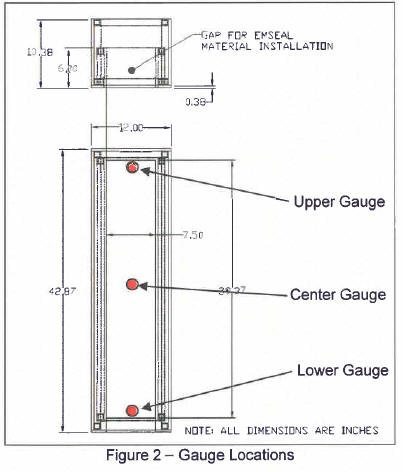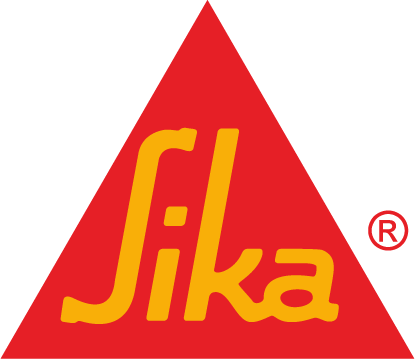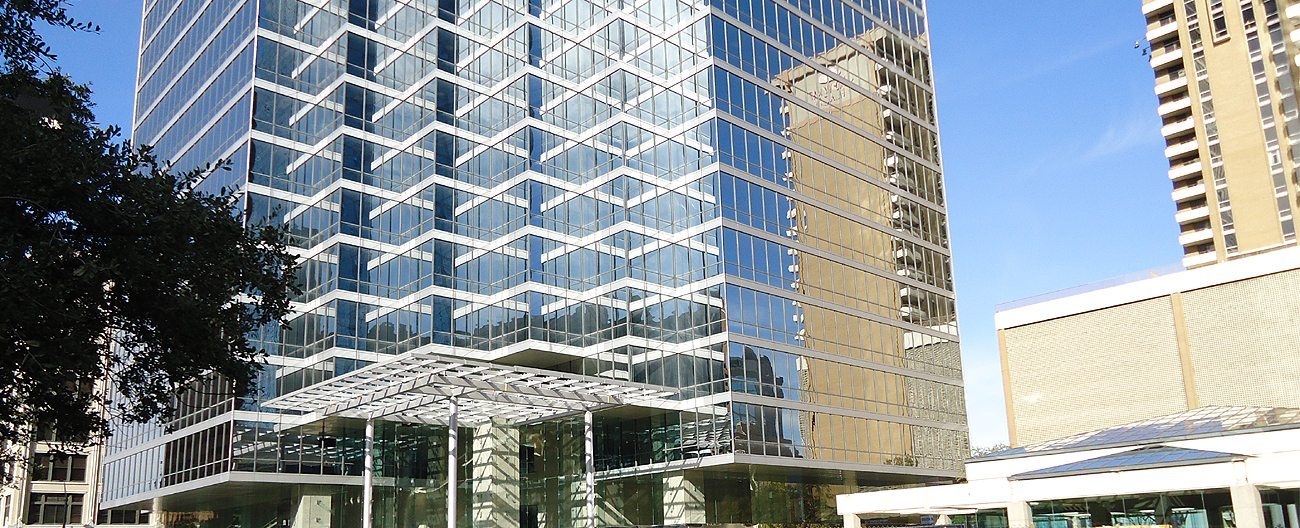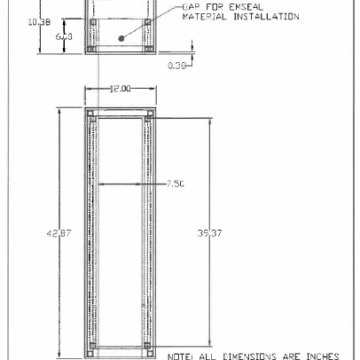Hurricane, Fire, AND Water
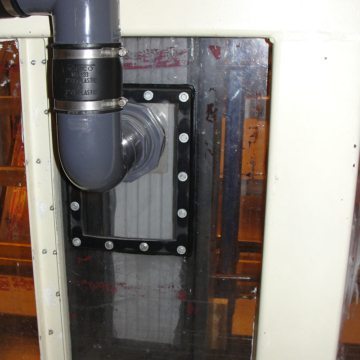
Figure 1: Test pressure chamber showing pressure/vacuum pipe and WFR2 at max joint opening (7/12"). During ASTM E-331, a vacuum is pulled on the airspace in front of the material while water is sprayed from behind. The material showed no leaks. In ASTM E-330, the air space is both evacuated and pressurized and deflection of the samples is measured on the back side. In all cases the deflection measure was so small as to be within the margin of error of the instrumentation. This means that at both negative and positive pressures beyond hurricane strength, the WFR2 expansion joint sealant does not deflect.
Hurricane-Fire-Water–Independent Tests Prove EMSHIELD WFR2 Expansion Joint Can Handle it All
Testing EMSEAL’s WFR2 to ASTM E-283, E-330, and E-331
EMSEAL’s Emshield WFR2 and SecuritySeal SSW2 are single-install expansion joints with unequaled performance. They are first of their kind wall expansion joints that serve every function required of structural expansion joints in a single product. These functions include:
- Waterproofing
- Movement
- 2-Hour UL-Listed Fire-Rating
- Sound Attenuation
- Insulation
- Color Coordination
- Hurricane-Force Wind and Water Resistance
- Pick-Resistance (in the case of SecuritySeal)
Relevant to any exterior wall design, ASTM tests E-283, E330, and E331 define the performance ability of a wall assembly in regard to air leakage, water penetration, and static air pressure difference (wind gust loading).
All wall and window assemblies contain joints–either to seal the assembly to the rest of the wall or to seal movement joints within the assembly.
It makes sense then to have data on how the building sealant or expansion joint material that seal these penetrations will perform. Why not, then, test the expansion joint sealant to the same three tests?
The results provide performance data that ensures that the sealant does not compromise the performance of the wall assembly.
More than 25 years ago, EMSEAL applied this standard to its precompressed joint sealants Colorseal and Backerseal. More recently we had an independent laboratory run the same tests on Seismic Colorseal and now Emshield WFR2.
In short, Emshield WFR2 (and by extension SecuritySeal SSW2 by virtue of its identical build except that is features pick-resistant polyurethane bellows instead of silicone), has the following capabilities:
- Air permeability that is 2 1/2-times lower than ABAA requirements
(ASTM E-283-04) - No water leakage at well beyond hurricane force, wind driven rain–500, 1000, or 5000 Pascals (ASTM E331-00 (2009)
- Resists wind loading well-beyond hurricane-force with essentially no deflection at both positive and negative pressures up to 4854 Pascals–equal to 200 mph winds (ASTM E330-02-procedure A)
You can download a .pdf of the independent test report or read it below:
Applicability of Test Results to Building Design
Beyond the obvious validation of the products ability to handle movement and seal water out of a structure, these independent tests confirm the suitability of the material to air barrier and hurricane design criteria:
AIR BARRIER DESIGN COMPATIBILITY:
*The Air Barrier Association of America (ABAA) uses 75 Pascals as the pressure level at which to measure permeability of an air barrier component, assembly or the entire building.
The ABAA allows compliance with their recommended permeability limits in ANY of three ways.
EMSHIELD complies in ALL three ways:
ABAA COMPLIANCE ALTERNATIVES:
- MATERIALS: Air Leakage Per Unit Area not to exceed 0.02 L/(s.m2)@ 75 Pa. WFR2, at <0.00017, is 118 times lower.
- ASSEMBLIES: Air Leakage Per Unit Area not to exceed (0.2 L/(s.m2) @ 75 Pa. WFR2, at <0.00017, is 1,180 times lower.
- The ENTIRE BUILDING: Air Leakage Per Unit Area not to exceed (2.0 L/(s.m2) @ 75 Pa. WFR2, at <0.00017, is 11,800 times lower.
Bottom Line: EMSHIELD as a component by itself or measured as part of either a wall assembly or the entire building will not compromise the permeability of the entire air barrier assembly designed for the building.
HURRICANE WINDS
**Miami-Dade County Florida (the toughest standard for hurricane building code) requires windows tested to 150 mph winds.
EMSHIELD has been tested to 200 mph.
The Saffir-Simpson Hurricane Scale is a rating from 1 – 5 based on the hurricanes intensity. Wind speed is the determining factor in the scale and winds are measured using a one-minute average:
| Category | Wind | Speed |
| mph | kph | |
| 1 | 74-95 | 119-153 |
| 2 | 96-110 | 154-177 |
| 3 | 111-130 | 178-209 |
| 4 | 131-155 | 210-249 |
| 5 | > 155 | > 249 |
Emshield has been tested to 200 mph positive and negative wind loading with essentially no deflection (1/2 of a mm) of the product either way.
In addition Emshield has been tested to 200mph wind-driven rain with no leakage.
EVALUATION OF EMSEAL CORPORATION’S “WFR2 (6″ EXPANSION JOINT MATERIAL FOR AIR LEAKAGE, WATER PENETRATION RESISTANCE AND STRUCTURAL PERFORMANCE
Report to: Emseal Corporation
120 Carrier Drive
Rexdale, Ontario
M8W 5R1
Attention: Mr. Bill Witherspoon
Telephone: 416-740-2090 Ext. 220
Fax: 416-740-0233
Report No.: 09-06-M0379-A
Proposal No.: 09-006-7677
Date: November 12, 2009
1.0 INTRODUCTION
At the request of Emseal Corporation, Exova was retained to conduct a performance evaluation of the air leakage resistance, water penetration resistance and the structural performance properties of a specimen identified as “ expansion joint material as outlined in Exova Proposal Number 09-006-9188.
Upon receipt, the specimen was assigned the following Exova Specimen Number:
Client Specimen Description
WFR2 (6″ Nominal)”
Exova Specimen No.
09-06-M0446
Note: the specimen was tested at its maximum movement capability of +25% or 7.5″ expanded.
2.0 PROCEDURE
Test Description | Test Method |
| Standard Test Method for Determining Rate of Air Leakage Through Exterior Windows, Curtain Walls, and Doors Under Specified Pressure Differences Across the Specimen | ASTM E283-04 |
| Standard Test Method for Water Penetration of Exterior Windows, Skylights, Doors, and Curtain Walls by Uniform Static Air Pressure Difference | ASTM E331-00(2009) |
| Standard Test Method for Structural Performance of Exterior Windows, Doors, Skylights and Curtain Walls by Uniform Static Air Pressure Difference | ASTM E330-02 (Procedure A) |
Note: SI Units are the Primary Unit of Measure
Testing Outline:
As outlined in Exova proposal number 09-006-9188, a steel test fixture was constructed which comprised of a 191 mm (wide) x 152 mm (deep) x 1000 mm (long) gap for the installation of the specimen. A fabrication detail of the test fixture is located in Figure 1.
The expansion joint material (Exova Specimen: 09-06-M0446) was installed in the test fixture’s gap by a representative from Emseal at Exova’s Mississauga testing facility on November 2, 2009. Photographs of the specimen’s installation are located in Appendix A.
Upon installation, the specimen was allowed to cure in the test fixture for five (5) days minimum at ambient laboratory conditions prior to any testing.
Testing was conducted on January 11, 2010 and the following testing protocol was requested by Emseal:
- Initial air leakage measurements taken at 25, 50, 75, 100, 150, 250 & 300 Pa (ASTM E238); Infiltration case.
- Water penetration resistance at 500, 1000 Pa , 5000 Pa (ASTM E331)
- Structural performance testing at ±500, ±1213, ±2730, ±4854 Pa (ASTM E330)
3.0 RESULTS
Table 1 – Summarized Test ResultsIn Accordance with ASTM E283-04 Exova Specimen No.: 09-06-M0379 | ||
| ΔP Pa / PSF | Air Leakage Per Unit Perimeter (Crack) Length* L/(s·m²) / CFM/ft² | Air Leakage Per Unit Area L/(s·m²) / CFM/ft² |
| 25 / 0.52 | 0.000014 / 0.000009 | 0.00017 / .000033 |
| 50 / 1.05 | 0.000014 / 0.000009 | 0.00017 / .000033 |
| 75 / 1.57 | 0.000014 / 0.000009 | 0.00017 / .000033 |
| 100 / 2.09 | 0.000014 / 0.000009 | 0.00017 / .000033 |
| 150 / 3.14 | 0.000014 / 0.000009 | 0.00017 / .000033 |
| 250 / 5.23 | 0.000014 / 0.000009 | 0.00017 / .000033 |
| 300 / 6.27 | 0.000014 / 0.000009 | 0.00017 / .000033 |
Note: Prior to testing the actual specimen leakage, extraneous air leakage measurements were taken at successive pressures as per ASTM E283-04
* Air Leakage measurements at all differential pressures listed above were below 2 SCCM. Based on the perimeter (crack) length and square area the air leakage measured is less than 0.000014 L/s·m or 0.00017 L/(s·m²).
Table 2–Summarized Water Penetration Test ResultsIn Accordance with ASTM E331-00(2009) Exova Specimen No.: 09-06-M0446 | ||
| ΔP (Pa) / PSF | Spray Period Duration | Results |
| 500 / 10.44 | 15-minutes | No water was observed to penetrate through the specimen or sealant |
| 1000 / 20.89 | No water was observed to penetrate through the specimen or sealant | |
| 5000*/ 104.43 | No water was observed to penetrate through the specimen or sealant | |
*Note: To ensure the worst case, testing at 5000 Pa was conducted after completion of ASTM E-330-02 structural testing
Table 3 – Summarized Structural Performance Test ResultsIn Accordance with ASTM E330-02 (Procedure A) Exova Specimen No.: 09-06-M0379 | |||||
| ΔP (Pa) / PSF | Wind Speed Equivalents | Upper Gauge Average Deflection During Load mm / in | Center Gauge Average Deflection During Load mm / in | Lower Gauge Average Deflection During Load mm / in | Net Deflection of Span mm / in |
| +500 / 10.44 | 65 mph | 0.8 / 0.031 | 0.2 / 0.007 | -0.1 / -0.003 | -0.2 / -0.008 |
| -500 / 10.44 | 0.6 / 0.024 | -0.4 / -0.044 | 0.0 / -0.002 | -0.6 / -0.025 | |
| +1213 / 25.33 | 100 mph | 0.9 / 0.035 | -0.2 / -0.009 | 0.9 / 0.035 | -1.1 / -0.044 |
| -1213 / 25.33 | 0.2 / 0.008 | 1.0 / 0.039 | 0.2 / 0.006 | 0.8 / 0.032 | |
| +2730 / 57.02 | 150 mph** | 0.1 / 0.004 | -1.0 / 0.041 | 0.1 / 0.005 | -1.2 / -0.045 |
| -2730 / 57.02 | 0.3 / 0.012 | 0.6 / 0.025 | 0.3 / 0.013 | 0.3 / 0.013 | |
| +4854 / 101.38 | 200 mph | 0.2 / 0.008 | 2.1 / 0.084 | 0.2 / 0.007 | 1.9 / 0.076 |
| -4854 / 101.38 | 0.2 / 0.008 | 2.1 / 0.084 | 0.2 / 0.007 | 1.9 / 0.076 | |
Notes: ‘-‘ denotes exfiltration airflow direction (simulated negative wind loading)
‘+’ denotes infiltration airflow direction (simulated positive wind loading)
ΔP Equivalents: 500 Pa = 65 mph; 1213 Pa = 100 mph; 2730 Pa = 150 mph, 4854 Pa = 200 mph
